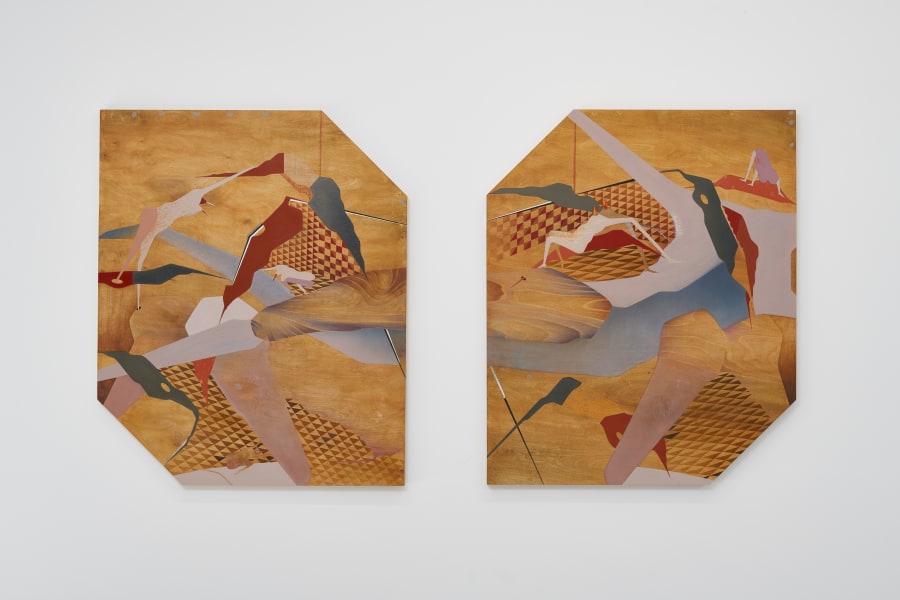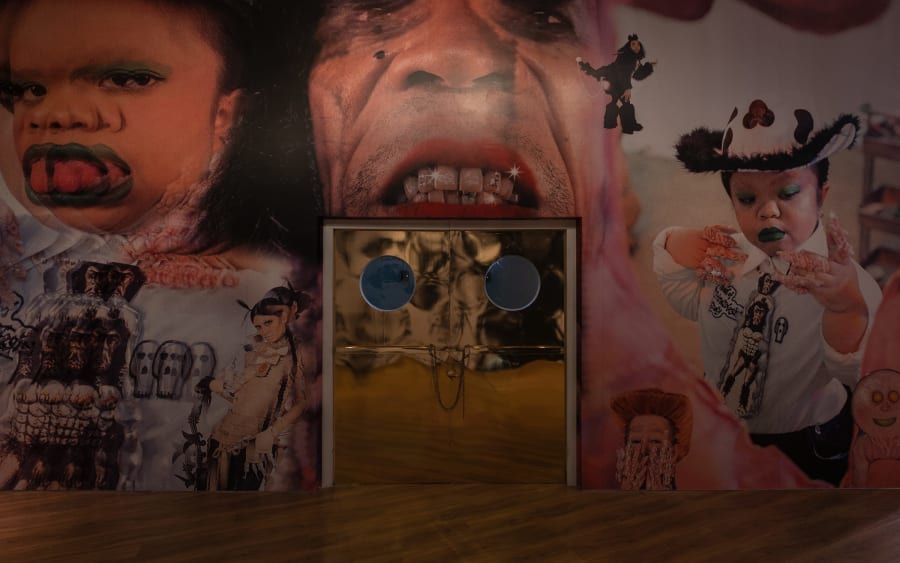The black-crested macaque – a species of amber-eyed monkey with punk-like hair – roams the rainforests of the northern tip of the Indonesian island of Sulawesi. For centuries, these monkeys – called yaki in the local language – have shared their land with the Minahasan people, an indigenous ethnic group from the region.
‘The yaki is simultaneously regarded as a pest and a blessing. It is subject to hunting while also being the focus of preservation efforts,’ says Minahasan artist Natasha Tontey who takes the monkeys as a point of departure for her playful exhibition Primate Visions: Macaque Macabre. Opening next month at Museum MACAN in Jakarta, it is the first Audemars Piguet Contemporary art commission to be presented in Indonesia.
Tontey explains that despite tensions with the macaque, ‘there is also a harmonious interaction between humans and the yaki.’ Even though the monkeys encroach on villages and steal crops, Minahasans celebrate the primates through various rituals – they even dress up like macaques as part of an annual ceremony – as their cosmology sees the species as closely interconnected with humans.
For her first institutional solo exhibition, the emerging artist uses speculative fiction to imagine a new reality in which humans and the yaki communicate. She brings this idea to life through an elaborate multi-screen video installation surrounded by props and costumes. ‘Natasha creates a science fiction-like future in which she asks: ‘How can we renew our relationship with the natural world and non-human creatures like macaques?’ says Denis Pernet, curator, Audemars Piguet Contemporary. ‘It’s a fantastic project, her largest work to date. She immerses audiences in a surreal environment.’
At the core of the show is an interrogation of our anthropocentrism. ‘There is a need to decentre humanity’s dominant role on earth,’ says the artist who believes humans should occupy a secondary rather than primary position on the planet. She argues that if non-human entities are given more agency, we can foster a more symbiotic understanding of the natural world. For Tontey, speculative fiction was the perfect vehicle to explore this possibility. ‘It’s important to speak about this issue through something that is imagination-driven to build a world where anything is possible,’ she says. ‘Mixing a pop culture sensibility, indigenous aesthetic and cosmology, community work with Minahasan people, and critical thinking have been my tools.’
Viewers entering Museum MACAN will be plunged into darkness with ambient, evocative sounds flooding the space. ‘It will really be like entering a different world,’ says Pernet, who explains that the exhibition was conceived as a journey. The show opens with a small video installation showing a documentary-style interview of a male Minahasan elder speaking about his culture and indigenous beliefs.
Deeper inside the space, a macabre yet humorous film tells the story of two caged macaques being set free by a female primatologist and her two female assistants. ‘It becomes very surreal,’ says Pernet. Their goals are to understand both human and non-human consciousness better.
To create the film, Tontey drew on the Grand Guignol style of horror theatre with lo-fi special effects, resulting in a sense of gaudiness and grisly melodrama. ‘I’m using it to render my approach more playful but critical at the same time,’ she says. ‘I am also interested in campiness, Indonesian soap opera, night markets, and other marginalised pop culture phenomena that somehow have this maximalist visual and kitsch aesthetic.’
Tontey creates a deliberately raw DIY aesthetic inspired by her childhood spent watching low-budget TV shows that dominated Indonesian television in the 90s. ‘She is also drawing from the stylistics of spaghetti westerns, action movies and horror movies, which are popular among Minahasans,’ says Pernet. ‘So she’s creating contemporary artwork that will be received by international audiences, but she also wants it to have an impact on younger generations of Minhasans. Several actors and people involved in the film are from Minahasa, so there’s a great sense of community.’
In recent years, Tontey, who is based in Indonesia between Jakarta and Yogyakarta, has been traveling to Minahasa more often to engage with her community and participate in ancient rituals. Growing up in Jakarta, however, she hardly paid attention to her heritage. She felt conflicted because ethnic groups from outside the capital were often labeled outsiders. ‘This was a perception I was keen to avoid,’ she recalls. ‘However, my attitude shifted upon encountering various compelling aspects of Minahasa, and I began to recognise the pervasive centrality of Jakarta in shaping cultural narratives.’ Interested in exploring alternatives to Indonesia’s dominant socio-political belief systems, she gravitated towards Minahasan cosmology. Engaging with her indigenous culture made her realize there are other ways of thinking about life. She was particularly fascinated with Minahasan’s deeply integrated relationship with the natural world.
The exhibition draws upon research on the social dynamics of female macaques. Tontey discovered that although male macaques act as leaders, females are responsible for protecting the troop. They also regulate the group’s fruit consumption ensuring they don’t exhaust fruit resources in any given area. Inspired by this, she worked with two female Minahasan actors to represent the primatologist and her assistants. She enlisted two male Minhasan actors to play the role of the monkeys. ‘The human characters act in a manner reminiscent of female yaki, attempting to restore balance in a world increasingly alienated from its connection to the earth,’ says Tontey, explaining that the female macaque can serve as a new model for humans to learn to live in harmony with nature.
World-building is another key part of the artist’s approach to the show. As viewers walk through the museum they will encounter sculptures that appear in the film. One room will be plastered with wallpaper made with a collage of characters in the movie, as well as costumes, props, and other elements of the set. ‘I am aiming to provoke a sense of surprise, where viewers are confronted by bold, exaggerated elements that would typically exist only on screen,’ says Tontey. ‘The immersive experience allows the audience to step into this world and become part of it – where the boundary between fiction and reality is intentionally blurred, prompting them to reassess their expectations and perhaps even their own sense of discomfort.’
The exhibition closes by confronting viewers with the cage from the film set which once imprisoned the yaki. ‘It ends with that element as its symbolic. It asks, are you free or still locked in your position?’ says Pernet of our conviction in the superiority of the human race. At a time when our environment is in crisis, the show provokes powerful, if not essential, questions about how we move through our world and engage with other living creatures.
Commissioned by Audemars Piguet Contemporary, ‘Primate Visions: Macaque Macabre’ will be on view at Museum MACAN in Jakarta from November 16, 2024 until April 6, 2025.
Audemars Piguet believes creativity feeds culture, helps us to see ourselves and the world differently, leading us on an ongoing transformative journey. Audemars Piguet Contemporary, the brand’s dedicated art program, embodies this spirit by commissioning international artists to create contemporary artworks. Please click here for more information about the installation.
Payal Uttam is an independent writer and editor who divides her time between Hong Kong and Singapore. She contributes to a range of publications, including Artsy, The Art Newspaper, South China Morning Post, and The Wall Street Journal.
Caption for top-image: Behind the scenes images from the filming of Primate Visions: Macaque Macabre, commissioned by Audemars Piguet Contemporary. All images are courtesy of the artist and Audemars Piguet.
Published on October 31, 2024.


